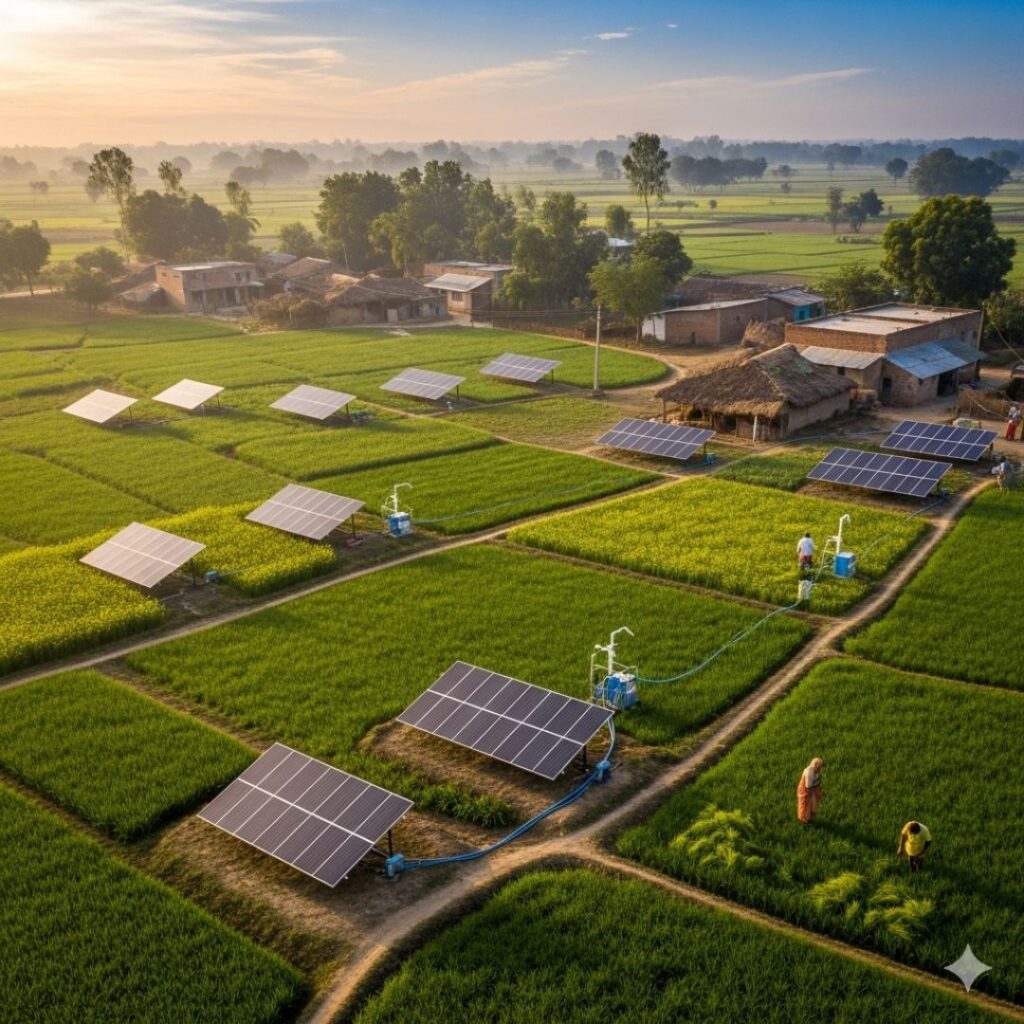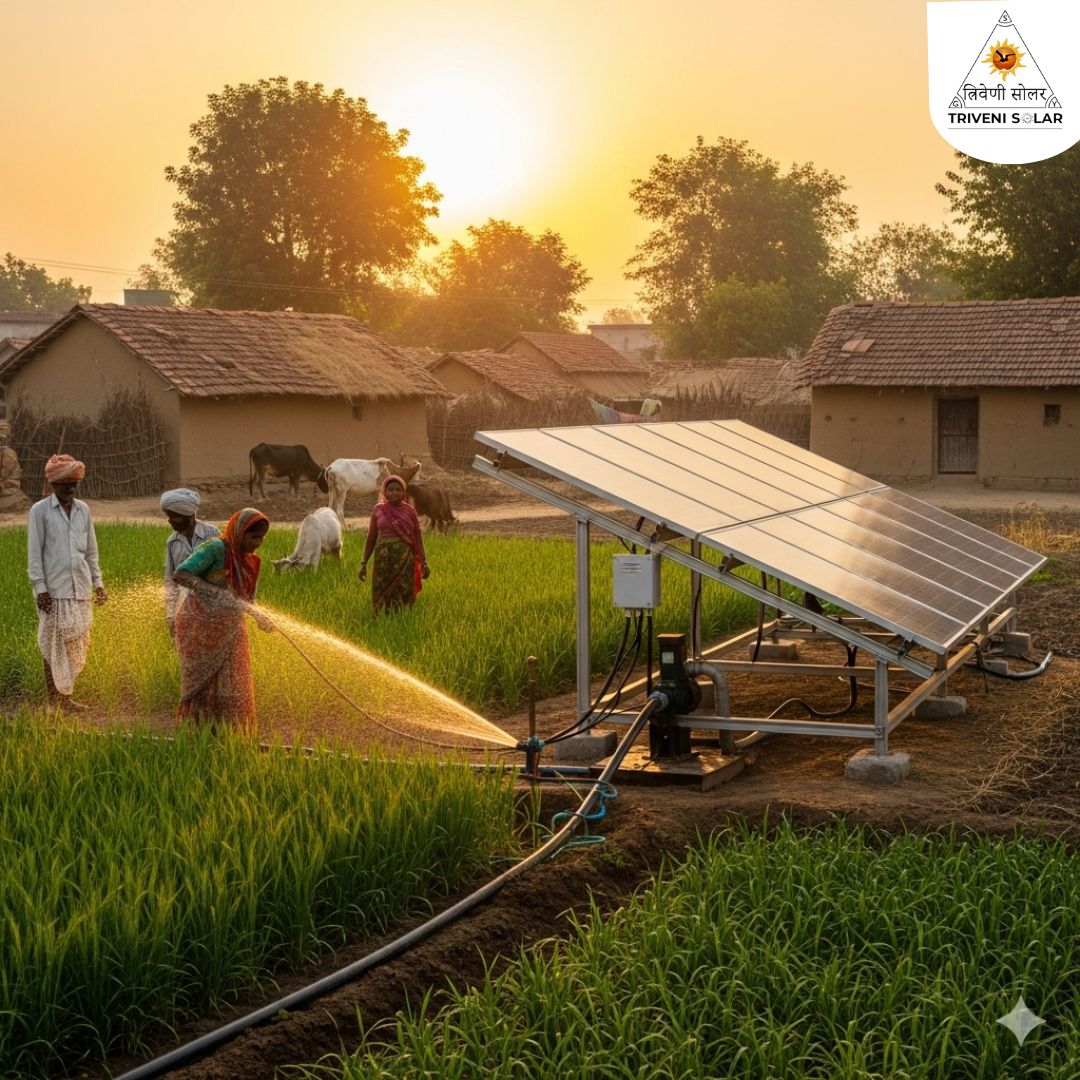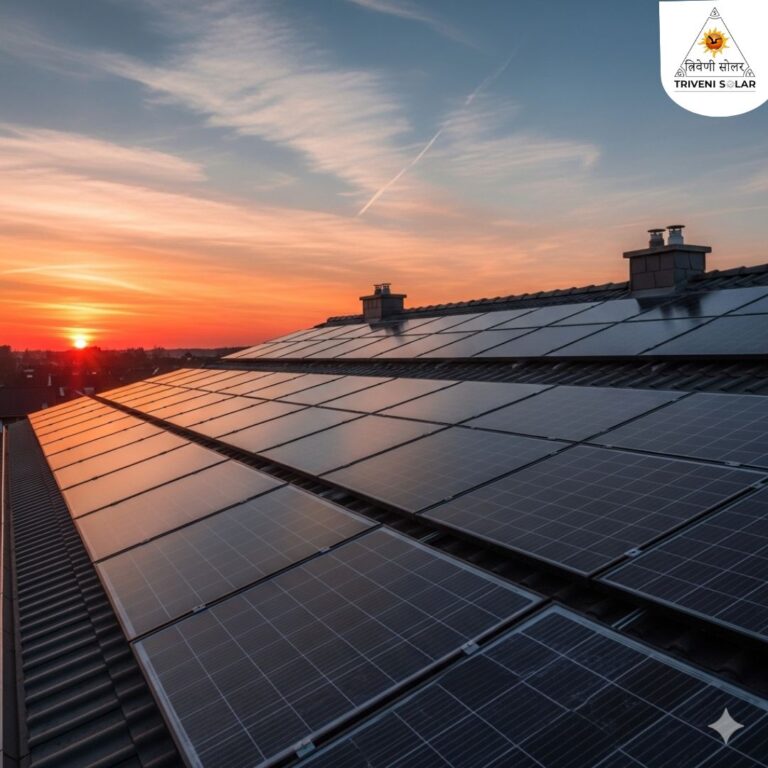The PM-KUSUM scheme is empowering rural India by providing farmers with solar-powered irrigation pumps, improving crop yields, reducing electricity costs, and promoting sustainable agriculture.
Table of Contents
- Introduction
- Understanding PM-KUSUM
- Benefits to Farmers
- Technological Innovations
- State-Specific Implementations
- Environmental Impact
- How to Apply for PM-KUSUM
- Challenges and Solutions
- Future of PM-KUSUM
- Conclusion
- FAQs
PM-KUSUM scheme Introduction
Rural India forms the backbone of the nation’s agriculture, but farmers often face challenges like erratic electricity supply, high energy costs, and low irrigation efficiency. Enter the PM-KUSUM scheme —a pioneering initiative designed to empower farmers through sustainable energy solutions. This ambitious scheme is reshaping the landscape of Indian agriculture by providing solar-powered pumps, incentivizing renewable energy use, and boosting farmer incomes.
Understanding PM-KUSUM scheme
What is PM-KUSUM?
The Pradhan Mantri Kisan Urja Suraksha evam Utthaan Mahabhiyan (PM-KUSUM) scheme aims to provide farmers with solar-powered irrigation pumps and promote decentralized solar energy production. Launched by the Ministry of New and Renewable Energy (MNRE), it focuses on three key components:
- Component A: Installation of 10,000 MW of grid-connected solar power plants on barren lands.
- Component B: Subsidy support for farmers to install 17.5 lakh standalone solar pumps.
- Component C: Solarization of 10 lakh grid-connected agricultural pumps to reduce dependency on conventional electricity.

Key Objectives
- Reduce farmer dependence on fossil fuels and erratic grid electricity.
- Increase farm productivity through reliable irrigation.
- Promote renewable energy adoption in rural areas.
- Empower farmers economically and socially.
PM-KUSUM scheme Benefits to Farmers
Reduction in Energy Costs
By switching to solar-powered pumps, farmers can save significantly on electricity bills, especially in states with high energy costs. Solar energy ensures uninterrupted irrigation, eliminating the need for diesel or grid electricity.
Increased Income Opportunities
With surplus energy generated from grid-connected solar pumps (Component A), farmers can sell electricity back to the grid, creating an additional revenue stream.
Enhanced Irrigation Reliability
Solar pumps operate independently of fluctuating grid supply, providing consistent water for crops. This stability ensures higher yields and better crop planning.
PM-KUSUM scheme Technological Innovations
Agrivoltaics: Dual Land Use
The scheme encourages innovative approaches like agrivoltaics, where solar panels coexist with crops. This not only generates electricity but also provides partial shading for certain crops, improving water efficiency and yield.
Integration with Smart Irrigation
Modern IoT-based systems allow farmers to monitor and optimize water usage. Combining PM-KUSUM solar pumps with smart sensors ensures precision irrigation, conserving water and maximizing productivity.
State-Specific Implementations
Rajasthan
The desert state has leveraged PM-KUSUM to install thousands of solar pumps, addressing water scarcity while boosting renewable energy adoption.
Gujarat
Gujarat’s agricultural grid-connected solar plants generate additional income for farmers while meeting energy requirements for rural industries.
Assam
In Assam, PM-KUSUM has helped farmers in flood-prone regions access reliable irrigation, ensuring year-round farming stability.
Environmental Impact
PM-KUSUM significantly contributes to India’s renewable energy targets, reducing carbon emissions and promoting sustainable agriculture. By replacing diesel pumps with solar alternatives, the scheme prevents thousands of tons of CO2 emissions annually.
How to Apply for PM-KUSUM scheme
Farmers can apply for PM-KUSUM through state implementing agencies. Here’s a simplified process:
- Check eligibility criteria (landholding, pump size, and electricity connectivity).
- Submit the application with proof of land ownership and identity.
- Receive verification and technical assessment by state authorities.
- Installation of solar pump and disbursal of subsidies.
PM-KUSUM scheme Challenges and Solutions
- High Initial Investment: Addressed through substantial central and state subsidies.
- Technical Knowledge Gap: Training programs and workshops for farmers.
- Maintenance Concerns: Local agencies and NGOs providing routine check-ups and support.
Future of PM-KUSUM scheme
The government plans to expand the scheme to cover more farmers and integrate emerging technologies like AI-driven water management. PM-KUSUM aims to be a model for sustainable rural development and energy security across India.
Conclusion
The PM-KUSUM scheme is more than a subsidy program; it is a transformative initiative that empowers farmers, promotes renewable energy, and fosters sustainable agricultural practices. By harnessing the sun, rural India is witnessing increased productivity, financial independence, and environmental benefits.
FAQs
What is PM-KUSUM and who is eligible?
PM-KUSUM is a government scheme providing solar-powered pumps and solar plant installations to farmers. Eligibility depends on landholding, type of pump, and electricity connectivity.
How much subsidy can farmers get under PM-KUSUM?
Subsidies vary by component and state, typically covering up to 60–90% of the project cost for solar pumps and grid-connected plants.
Can PM-KUSUM help reduce electricity costs?
Yes, solar pumps replace diesel and grid electricity usage, significantly lowering operational costs for irrigation.
How can farmers sell surplus electricity?
Grid-connected solar plants allow farmers to sell excess electricity back to the state grid, generating additional income streams.
Is PM-KUSUM environmentally friendly?
Absolutely. The scheme reduces carbon emissions, promotes renewable energy, and encourages sustainable farming practices.



